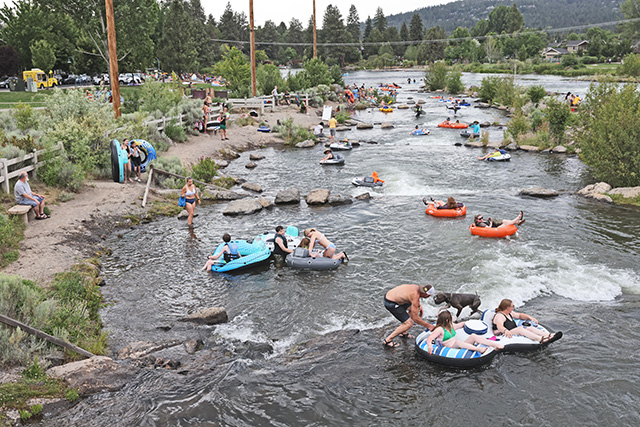The wizardry behind a terrifying wave
Published 4:00 am Friday, January 11, 2013
LOS ANGELES —
The tsunami sequence in the film “The Impossible” is so terrifying in its intensity that you might believe you’re watching actual documentary footage of the natural disaster that struck Southeast Asia on Dec. 26, 2004, killing hundreds of thousands.
The verisimilitude is the result of more than a year’s work of exacting planning — and experimentation — by director Juan Antonio Bayona and his visual- and special-effects supervisors, who used a giant water tank in Spain (the largest in Europe), a sprawling miniature of a beach resort, on-location shots in Thailand and some computer wizardry to create the 10 minutes of terror.
“The Impossible,” a drama of faith and bravery based on the real-life experience of a Spanish family, stars Naomi Watts and Ewan McGregor. They play a husband and wife, Maria and Henry, who are on vacation with their three sons in Phuket, Thailand, when the tsunami hits their hotel.
“The whole film was about a true story,” said Bayona, “so it had to feel very real.”
Bayona began story-boarding the sequence two years before filming began. He enlisted visual-effects supervisor Felix Berges and special-effects supervisor Pau Costa, who were involved in the project for more than a year.
To prepare, Berges traveled several times to Thailand, but because almost everything had been rebuilt since the disaster — including the resort where the Spanish family stayed — he found images and footage of the actual tsunami to be more helpful in his design of the effects.
He spent hours upon hours watching footage of the disaster. “Everybody has an idea of the tsunami of being a big wave,” he said. “It is not a big wave. It is a huge amount of water that comes to land.”
Though the team studied other films and found what Berges called “some very good examples of CGI water,” they decided to use the real thing for “The Impossible.”
“I was almost 14 months on the project because we never had done anything like this (in Spain), so we really had a lot of tests,” said Costa.
The production team worked with a specially built channel in an outdoor tank — measuring nearly 400 by 260 feet — at the Ciudad de la Luz studios in Alicante, Spain. There, they spent a month shooting scenes of the wave, the flood and Maria and her son Lucas being carried by the wave and lashed by felled trees and other debris. The scenes of Watts being submerged were shot in a small tank, with the actress sitting in a moving chair to which a camera had been fixed.
The production tapped Edinburgh Designs Limited, which specializes in wave generators and equipment for marine and coastal engineering labs, to help the filmmakers figure out how to make the wave in the channel, said Costa. Then he and his team worked on modifying the design to allow the doors of the channel to open quickly for retakes.
“We started off with a test with like six submergible pumps to try to get the current,” said Costa. “We ended up with 33 submergible pumps, and each pump weighed like 1,322 pounds.” Each pumped about 80 gallons per second. Four large generators supplied power to the pumps, which had to be adapted for the tank because they couldn’t be visible on camera.
The actors would sit in carts that moved on two rails inside the channel, and they were pulled by steel cables at the same speed as the current, said Costa. “They were very protected. They were sitting in the baskets with their arms and legs sticking out, and we would pull the camera next to them and behind them.”
Bayona said millions of gallons of seawater were used for the sequence. The water was treated with food coloring to darken it.
To film the tsunami obliterating the resort, the German company Magicon GMBH constructed a large miniature on a scale of one to three of the resort’s recreation area. The production had only one chance to get the shot because only one miniature had been built. Director of photography Oscar Faura used an apparatus with 10 cameras to make sure he could capture it all.
Watts: Tsunami in ‘Impossible’ felt all too real
NEW YORK — Naomi Watts’ gritty performance in “The Impossible” has garnered her an Oscar nomination. The film follows the harrowing, true-life tale of a vacationing couple (Watts and Ewan McGregor) and their three young boys who were swept up — and separated — during the 2004 tsunami that struck in the Indian Ocean.
“We got a glimpse into how powerful nature can be,” said Watts, who was raised in England and Australia and now lives in New York with her partner, Liev Schreiber, and their two sons.Watts is nominated for a Golden Globe Award for “The Impossible.”
Arriving at the airport in Phuket, Thailand, was “intense,” she recalls. So much still needed to be repaired, and “everywhere you went, people wanted to share their experiences of loss or survival.”
The overall effect of the 10-minute tsunami sequence is visceral, as Watts and Tom Holland — a young British actor who plays her eldest son — appear to be dragged and pulled under water by roiling currents, thrashed and impaled as human bodies, tree branches, cars, buildings and debris all swirl together in a maddening rush.
Watts and Holland spent six weeks in the tank, submerged to their chins amid waves and debris.
“We were gasping for air, spitting out water … it created a level of fear that was … was real,” said Watts. “Whenever I thought, ‘I don’t know if I can do this again,’ you just remember this was nothing compared to what people actually went through.”
— Joseph V. Amodio, Newsday







